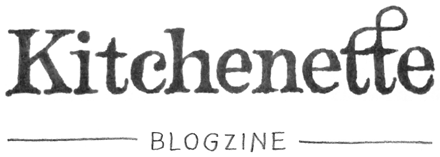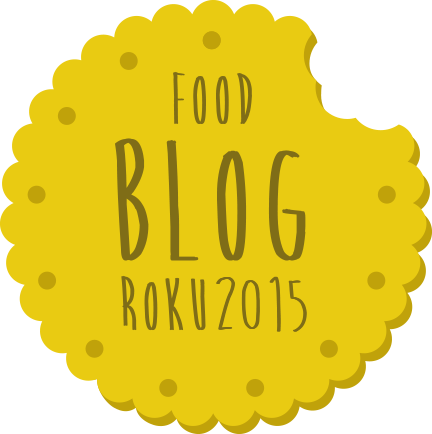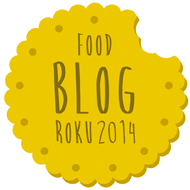13. August 2013
This recipe is a great opportunity to learn the sepia dye because the principle is still the same even if you use pasta. And that's what happened when I approached Gianfranco. So whether you want to cook exactly this amazing risotto, or to include other ingredients and skip some of it, because I understand that not everything is usually available, you can stick to the process and get inspired.
Sepia dyes sell mostly wherever they have sea fish. It is sold in small packs and almost does not cost anything. If you are somewhere at the seaside and have fresh cuts, you can dump your pouches with the dye, you will know them. The procedure with the fresh dye is the same.
Gianfranco also taught me a new technique for defrosting sepia . In order to be as delicate and fragile as possible, it is placed in a milk bath. Just as the liver is softened, and for example, my mom lets the rest of the carp on the Christmas carp. Immerse them simply in a bowl of milk and water until they come in line, a ratio of 1: 1 will be enough.
Because lately, I encounter more seafood, which is deeply frozen up to -60 ° C just after catching on fishing boats to maintain maximum freshness, maybe it will be good for you.
And now something about risotto ... True Italian is creamy and that is why it is necessary to use a variety of high-starch rice. Gianfranco does not allow Ferron to grow a family for the fifth generation. The ideal is Carnaroli (it is stronger, it is not cooked, it is the queen of Italian rice), Vialone Nano (a rice that is quite quick to digest, but if it is prepared properly, absorbs the maximum flavor), Arborio (a cheaper version of risotto rice , often used for desserts).
Salty fingers are a beautiful modern plate decoration. They are crunchy, fresh, full of strong salty juices. They have no special smell, you almost feel that you have a cucumber marinated in the sea water in your mouth. They contain proteins and carbohydrates. Ideal for crustaceans, shells and fish. When making food, make sure the final result is not too salty.
The guest chefs
Gianfranco Coizza is native to Italy, coming from Sardinia, the heart of the Mediterranean Sea, and hence the fusion of "ancient sea" cultures as he says.
She remembers her childhood with a smile and tells how the vegetables and fruits of all kinds and the aroma of her own garden are always around. Perhaps every member of the family from the mother's side had a farm, a vineyard and olive trees, so from childhood he taught how to appreciate the quality of healthy ingredients. In high school he studied agricultural industry, where he trained in wine, olive oil, cheese, ...
He then moved to Tuscany for studying literature in Siena and worked in the Chianti winery and several restaurants. After studying, he began to travel and dream of writing about travel and gastronomy.
After a couple of years, he felt the need to finally sink some roots and return to his old passion. And Aldente was a great opportunity. Tratorie, holding first-class ingredients and standing on the basis of traditional Italian cuisine, gave Gianfranco a great opportunity to re-discover his roots and gastronomic history.
After two and a half years, full of satisfaction, it was time for his parallel solo project Ingredients. The name derives from the original Latin meaning of the word ingredient, meaning ingredient. The main idea is that the ingredient is not just a part of the recipe, but it makes us a deeper story that is packed with many cultures and histories. Ingredientista.cz will be a complete portal full of recipes and information on origin and the best use of ingredients that can be purchased directly there. So e-shop full of quality products at a meaningful price.
It will also be connected to the Pop-up dinner club and catering service , where it is possible to taste these ingredients.
It will convey a new angle to the Italian and Mediterranean cuisine of the Czech gastronomic scene, heading in a less obtrusive direction, focusing on the quality of raw materials available and the key to their proper use.
Postup
1.
In a larger caserrole-oil pan, prune the shallot into gold. Add the rice and reheat, toast until the rice begins to be partially transparent. Add half of the prosecution and when it is absorbed, start adding the broth with frequent mixing.
2.
Meanwhile, put the asparagus for 3-4 minutes in a strongly salted boiling water. Remove the asparagus with ice bath (put it in a bowl of water and ice).
3.
Fill the oil on the next pan. When it's hot, add a clove of unpeeled garlic and a sliced sliced to small wheels. Briefly rebuild and add up to two spoons. When absorbed, put aside.
4.
When the risotto is almost finished, add the remainder of the prosecca and the sepia dye. When almost all of the fluid is absorbed, weigh, add the butter and everything you have in the sepia pan. Stir for 3 to 4 minutes and the dye gradually releases.
5.
Top the asparagus and leave for decoration, cut the remaining part on small wheels and add to the rice. When rice has the right cream consistency, season with salt and serve. Decorate the ends of asparagus and algae.
















